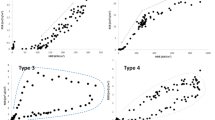Abstract
The use of polymeric materials in building or construction applications is steadily increasing. Therefore, the potential for these materials to be exposed to fire is also increased. The pyrolysis characteristics of these materials and the understanding of their pyrolysis characteristics is thus a necessity. There are many standard tests used to evaluate materials. Unfortunately, the correlation between these tests and large scale fires is less than desirable.
A new bench scale rate of heat release apparatus, the Cone Calorimeter, has recently been introduced. This apparatus has been shown to have much better correlation between room scale testing and large scale fire testing. The Cone Calorimeter provides a pyrolysis profile of a material under ambient oxygen conditions. Characteristics such as Ignition Time, Total Heat Release, Maximum Rate of Heat Release, Mass Loss during Pyrolysis, CO, CO2, and smoke production are determined. In this work several polymers are examined and the general pyrolysis characteristics of these polymers are discussed.
Access this chapter
Tax calculation will be finalised at checkout
Purchases are for personal use only
Preview
Unable to display preview. Download preview PDF.
Similar content being viewed by others
References
Braun, Emil, Sheilds, J.R., Harris, Richard H., Flammability Characteristics of Electrical Cables Using the Cone Calorimeter, NISTIR 88-4003, 1989.
Babraskas, V. Development of the Cone Calorimeter — A Bench-Scale Heat Release Apparatus Based on Oxygen Consumption, J. Fire Sci. 8, 81 (1984).
Proposed Test Method for Heat and Visible Smoke Release Rates for Materials and Products Using An Oxygen Consumption Calorimeter, E-5 Proposal, P1909, American Society for Testing and Materials, Philadelphia, Pa. 19103 (1987).
Babrauskas, V. and Parker, W.J., Ignitability Measurements with the Cone Calorimeter, NBSIR 86-3445, (U.S.) Nat’l Bur. Stds. Gathersburg’ MD. (1986).
Kanuary, A.M., and Martin, B.M., A Profile of the Heat-Release Rate Calorimeter, Int’l Symp. on Fire and Safety of Combustible Materials, Univ of Edinburgh, UK (1975).
Brown, J.E., Braun, E. and Twilley, W.H., Cone Calorimeter Evaluation of the Flammability of Composite Materials, NBSIR 88-3733, (U.S.) Nat’l Bur. Stds. Gathersburg, MD, (1988).
van Krevelen, D.W., Some Basic Aspects of Flame Resistance of Polymeric Materials, Polymer, Vol. 16, p. 615–620, 1975.
Author information
Authors and Affiliations
Editor information
Editors and Affiliations
Rights and permissions
Copyright information
© 1991 Elsevier Science Publishers Ltd
About this chapter
Cite this chapter
Goff, L.J. (1991). Analysis of Polymers Using the Cone Calorimeter. In: Lemstra, P.J., Kleintjens, L.A. (eds) Integration of Fundamental Polymer Science and Technology—5. Springer, Dordrecht. https://doi.org/10.1007/978-94-011-3890-1_39
Download citation
DOI: https://doi.org/10.1007/978-94-011-3890-1_39
Publisher Name: Springer, Dordrecht
Print ISBN: 978-1-85166-587-7
Online ISBN: 978-94-011-3890-1
eBook Packages: Springer Book Archive



